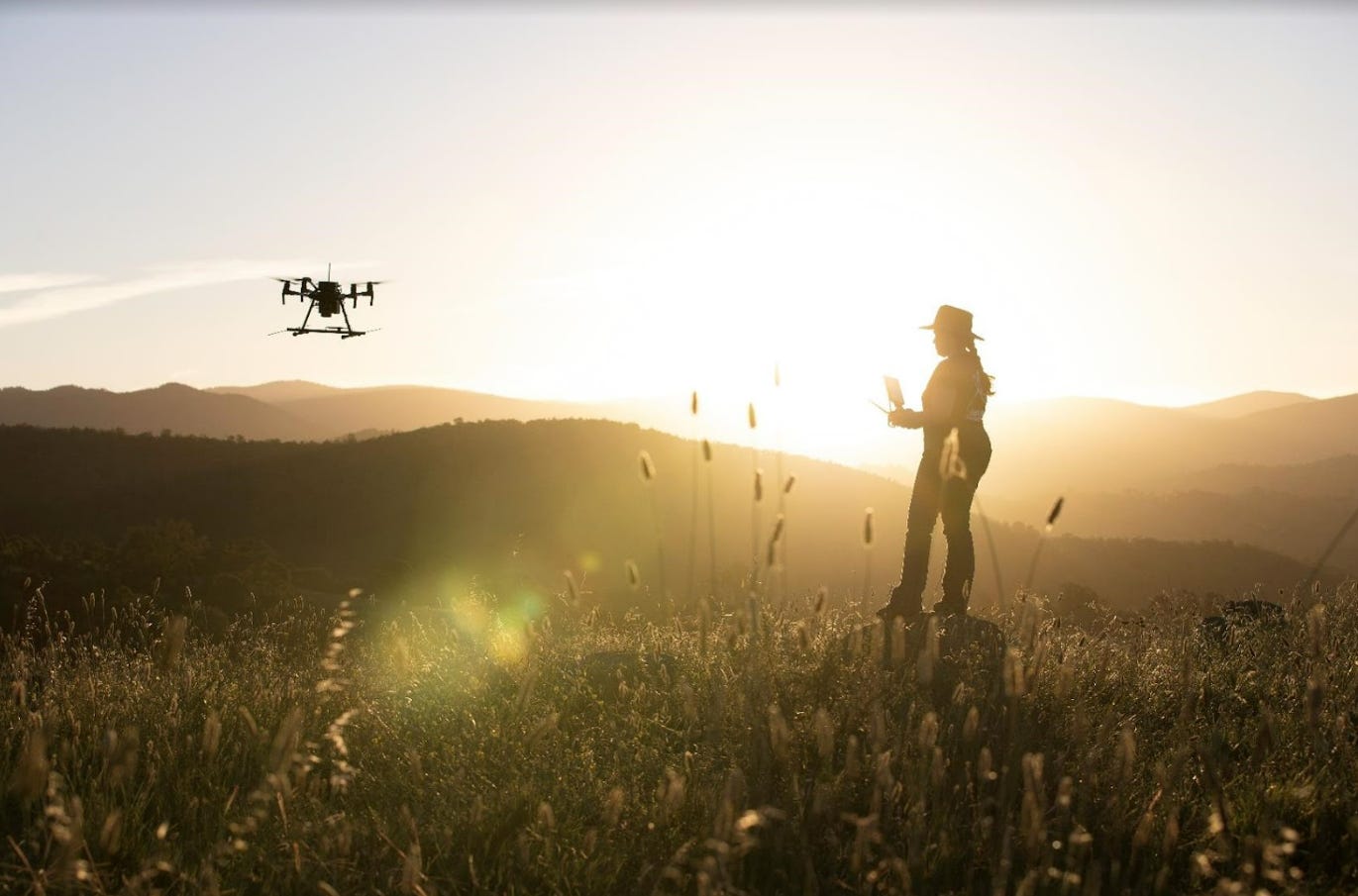🌏 The Biodiversity Accelerator+ 2022 Cohort Company: Wildlife Drones
It's a bird, it's a plane.... no, it's a drone equipped with a wildlife-tracking sensor! Wildlife Drones condenses the work of in-field conservation data collection from days to hours.
TL;DR - Wildlife Drones’ aerial tracking systems attach easily to readily available drone models, so that government agencies, NGOs, and researchers with conservation mandates can track animal movement faster, more reliably, and across risky terrains. Read more about how they’ve served their clients needs here!
By the inherent nature of their work, conservationists don’t have it easy. They have to work with animals that are always on the move across difficult (and possibly unsafe) terrains, like rugged mountains and vast boggy wetlands. They have to make management decisions on native and invasive species alike, with potentially limited data to understand the behaviours of local populations to optimize those decisions. And often, they have to do all of that with limited budgets or staff numbers to work.
For the uninitiated, the way animals are currently tracked is by tagging them with very high frequency (VHF) tags, and then manually searching for their radio signals using a handheld receiver, like this:
Image credit: Wikipedia commons
That means trekking vast distances across a wide study area, and lots of frustrations if you’re dealing with fast moving animals, like birds. It almost goes without saying, but pouring that much money and labour hours into collecting data from on the ground where tag signals are often blocked is a huge pain point for these organisations.
That’s where Wildlife Drone - led by conservation ecologist 🦜 Dr. Debbie Saunders, Founder, CEO, and Chief Remote Pilot - makes all the difference.
⚙️ How it works: An aerial radio telemetry system for collecting more data on animal movements, more often
👉🏼 The core of the Wildlife Drones business is their proprietary aerial radio telemetry system, which can simultaneously detect 40 tagged animals at any one time with their increased height and line of vision.
👉🏼 The system consists of (1) a long-range VHF antenna and radio receiver with embedded software. These attach simply to off-the-shelf drones, like a DJI Matrice 210 drone or a Freefly Systems drone, and are universally compatible with any VHF tags that the client is already using; and (2) a base station, which maps all data in real-time and comes with Wildlife Drones’ tracking app pre-installed.
👉🏼 For larger scale migration projects where clients have access to piloted aircrafts in place of drones, Wildlife Drones also has an adaptor to mount their system onto the aircraft.
👉🏼 For clients that require the support, Wildlife Drones also offers a suite of stackable support services to make them a one-stop-shop for tracking solutions - such as drone thermal imaging to detect non-tagged animals through thick vegetation, and drone pilot training and licensing.
To ease any uptake friction from customers, they also deliver complimentary services such as grant application advising, tag detection distance testing, and drone insurance assistance.
Who’s it for? The business of tracking animal movements
Wildlife Drones’ solution can serve the needs of wildlife and invasive species managers in government and NGOs, and even livestock owners, and they count the US Department of Agriculture, the University of Western Australia, and the Koala Farmland Fund among their ever growing list of current clients.
We’ve been impressed with the traction they’ve had with customers across sectors, which proves the business case for their solution.
“As a Wildlife Biologist for over 20 years and the Founder and CEO of Wildlife Drones, nature conservation is at the heart of who I am and what I do. I am inspired on a daily basis by our clients who adopt our technology to unravel the secrets of wildlife and their ecosystems so they can better protect and manage them in our rapidly changing world. I'm also passionate about creating innovative technology and empowering people to use it to help prevent biodiversity loss and ecosystem collapse, both locally and globally.” - Dr. Debbie Saunders
Wildlife Drones is addressing multiple challenges in conservation with a single solution, with a committed team behind its growth. We’re excited by its catalytic potential for Australia, the US, and in other markets to come.
We’re looking forward to the progress we’re sure they’ll make throughout the accelerator, and to keep working with them towards their continued success!
If you thought this was an interesting read, please support our work by sharing this post or subscribing for future work!
Want to learn more? Check out the Wildlife Drones website, Linkedin, Facebook and Twitter pages for more updates! Also be sure to check out their video feature on Bloomberg.







